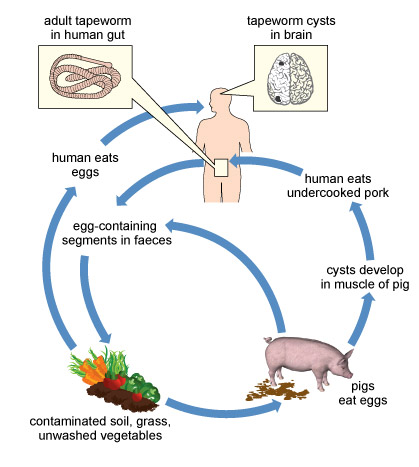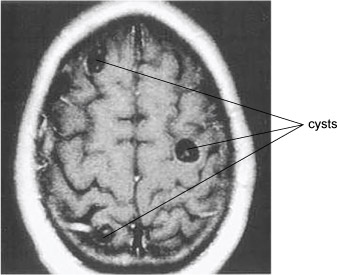3.5.2 Tapeworms and epilepsy
Tapeworms are easily distinguished from roundworms because they have long flattened bodies (resembling a tape, hence their name). They are the largest of the worms that infect people; some species can grow up to 10 metres in length. Different species of tapeworms are parasites of cattle, pigs, dogs and even fish, but they can also infect humans.
Although deaths due to tapeworms are rare, they cause pain in the abdomen and reduce the nutrients available to their human host. However, the main health risk is from epilepsy, i.e. brain seizures or fits. Figure 6 shows the life cycle of the pork tapeworm (Taenia solium), the species associated with acquired epilepsy. Contrary to popular belief, people are rarely infected through eating undercooked pork.
Tapeworm eggs in pig faeces contaminate land around human settlements where pigs graze. Soil is also contaminated with worm eggs from human faeces if people are forced to defaecate in the open because there is no sanitation. People are infected when they swallow the eggs in soil on unwashed vegetables or when eating with unwashed hands. The eggs hatch into larvae [lar-vee] in the human gut; larvae (singular, larva) are an immature stage of development in many invertebrates. Worm larvae may develop into adult tapeworms in the human gut, but some burrow into the person’s muscles, eyes and brain, where they ‘encyst’, i.e. become encased in a tough outer covering. Cysts in the brain (Figure 7) can trigger epileptic seizures. Around 30% of people with epilepsy in Latin America, Sub-Saharan Africa and South-East Asia have pork tapeworm cysts in their brain (Ndimubanzi et al., 2010).


